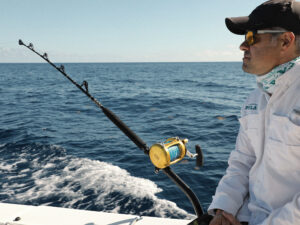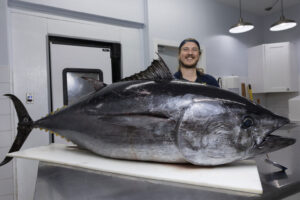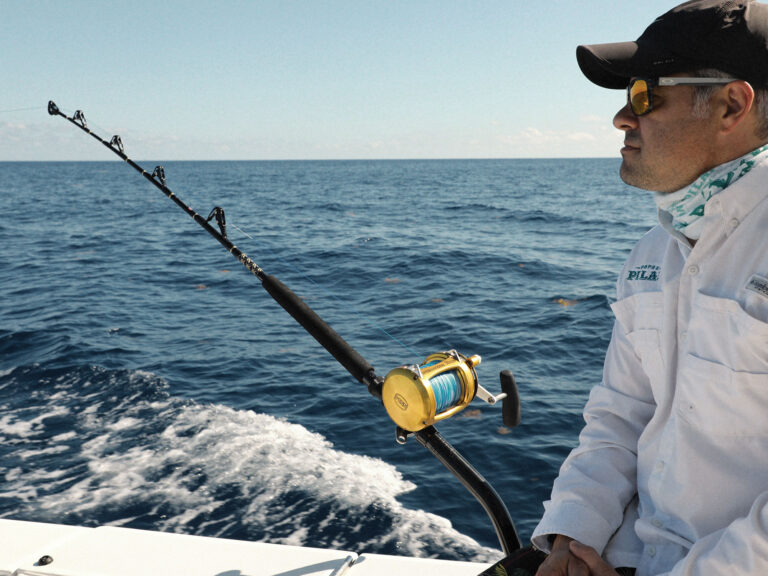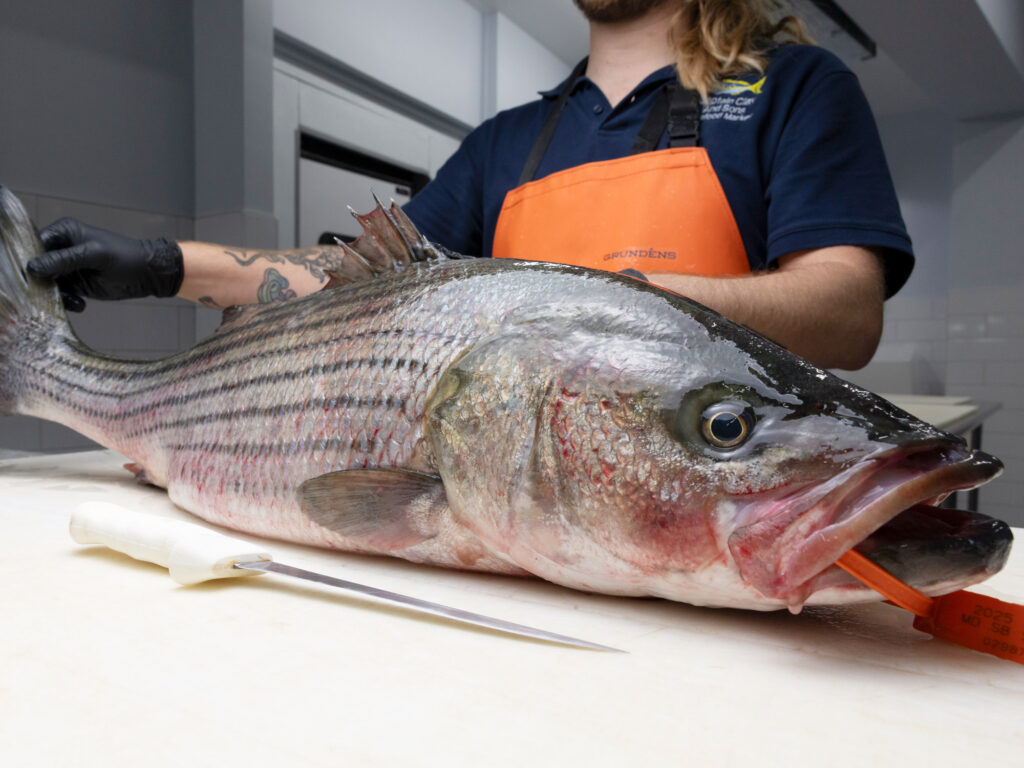
Fillet a striper properly, and you’ll maximize the meat yield for one of the tastiest fish in the water. Chasing striped bass is more than a sport — it’s a tradition passed down through generations. With more than 6 million striped bass harvested each year — averaging 10 to 20 pounds each — recovering just 5 percent more meat from every fish could save millions of pounds of meat annually from this one species alone and preserve the tradition for many years to come.
Striper Regulations and Conservation
Striped bass (Morone saxatilis), or stripers or rock bass depending on where you fish, are one of the most prized catches along the Atlantic Coast of North America, especially among Northeastern sport anglers who value them for their powerful fight and delicious, flaky meat.
These anadromous fish migrate between salt water and fresh throughout their lives, historically thriving from the St. Lawrence River southward. However, their populations have declined due to overfishing, habitat loss, environmental pressures and several years of poor reproduction.
In response, regulatory bodies have implemented size limits, slot limits and seasonal restrictions to protect spawning adults and juvenile fish. Recent striped bass conservation measures, including the introduction of stricter slot limits for recreational anglers and tighter quotas for commercial fishermen, have shown promising results in helping stabilize the population.
Commercial fishermen face rigid quotas and gear restrictions designed to minimize bycatch and prevent overharvesting. Meanwhile, recreational anglers are encouraged to practice careful catch-and-release and follow new regulations aimed at protecting larger breeding fish. As stewards of the waters, it’s vital that anglers and commercial harvesters alike balance their passion for fishing with sustainable practices to ensure striped bass remain a thriving species for future generations.
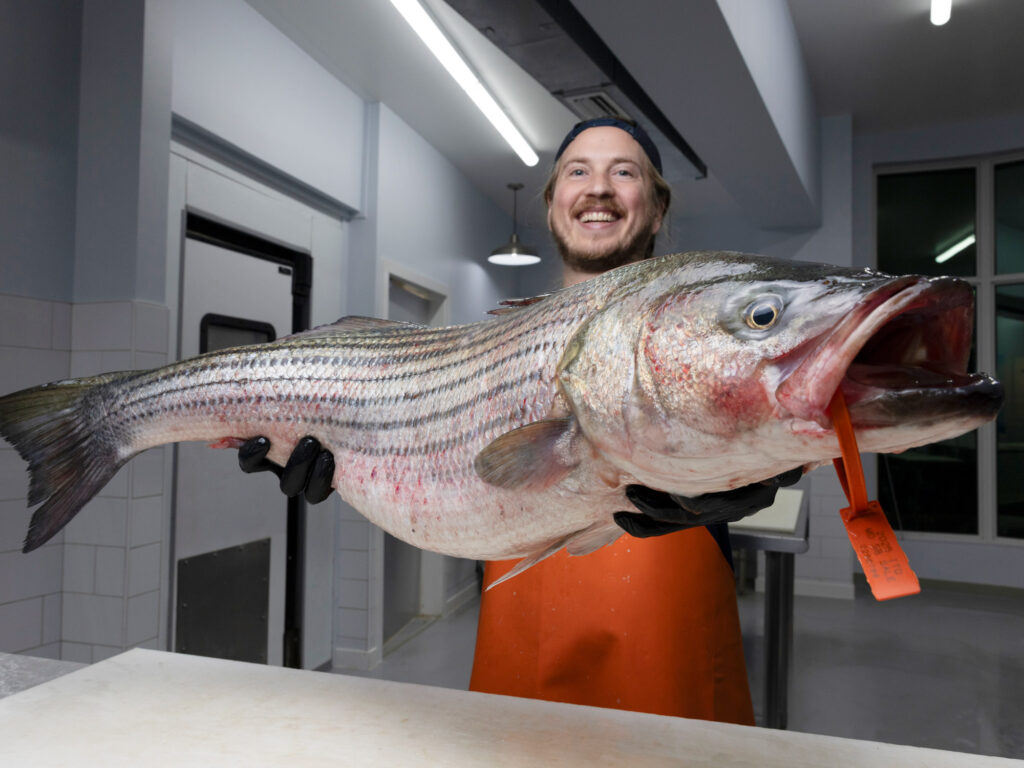
Preparing to Fillet a Striper on the Water
When you decide to keep a fish, ensuring every part of it is used honors the catch and reduces waste. Properly filleting a striper is one of the best ways to achieve this, and that process starts as soon as you catch your fish. Immediately after catching a legal fish, rip out a couple gill rakes or stick a knife in the gills to release some of the blood.
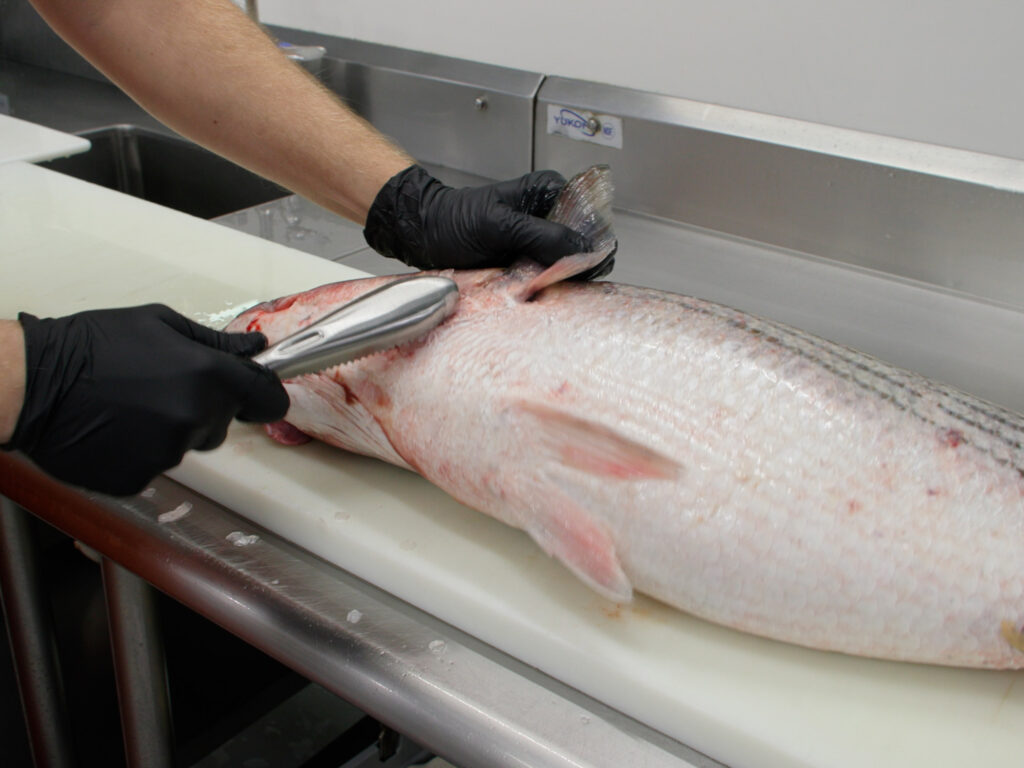
How to Remove and Cook Fish Collars
When it comes to making the most of your striped bass, it’s easy to overlook some of the tastiest parts of the fish. Before I even start filleting a striper, I always take a moment to scale the collars. Trust me—you’ll want to save those collars for cooking, skin-on and bone-in. Once you fillet a striper, it becomes much harder to remove every last scale from the collar, so handling it first saves time and effort.
Striper collars offer two distinct types of meat: the rich, fatty collar meat and the tender pectoral fin meat. Both are incredible and are great roasted, grilled or fried. One of my favorite ways to prepare them is with a bold, savory marinade.
I mix soy sauce, honey, sriracha, freshly grated ginger and garlic into a smooth sauce. Let the collars soak in this mixture for a bit, then roast them in a 425°F oven for 15 to 20 minutes. Once they’re done, plate the collars over a bed of rice, drizzle the remaining sauce from the baking dish on top, and garnish with thinly sliced chives. After one bite, you’ll never toss out striper collars—or any fish collars—again.
5 Steps to fillet a Striped Bass
Step 1: The First Cut
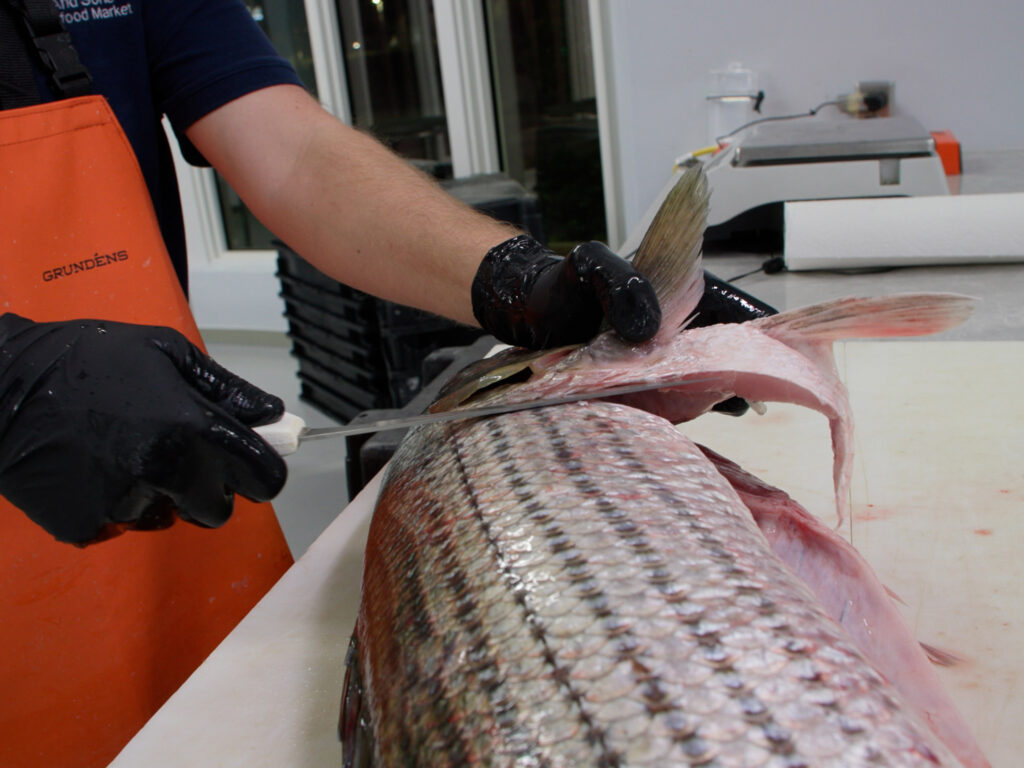
Start by lifting the pectoral fin and making a clean, angled cut just behind the head. Avoid cutting straight down—you’ll risk leaving behind valuable meat near the head. Striper scales are tough, but angling your knife not only secures every bit of meat, it also makes the first cut smoother, since you’re not forcing the blade through the scales.
Step 2: A Knife Hack for Filleting Striper
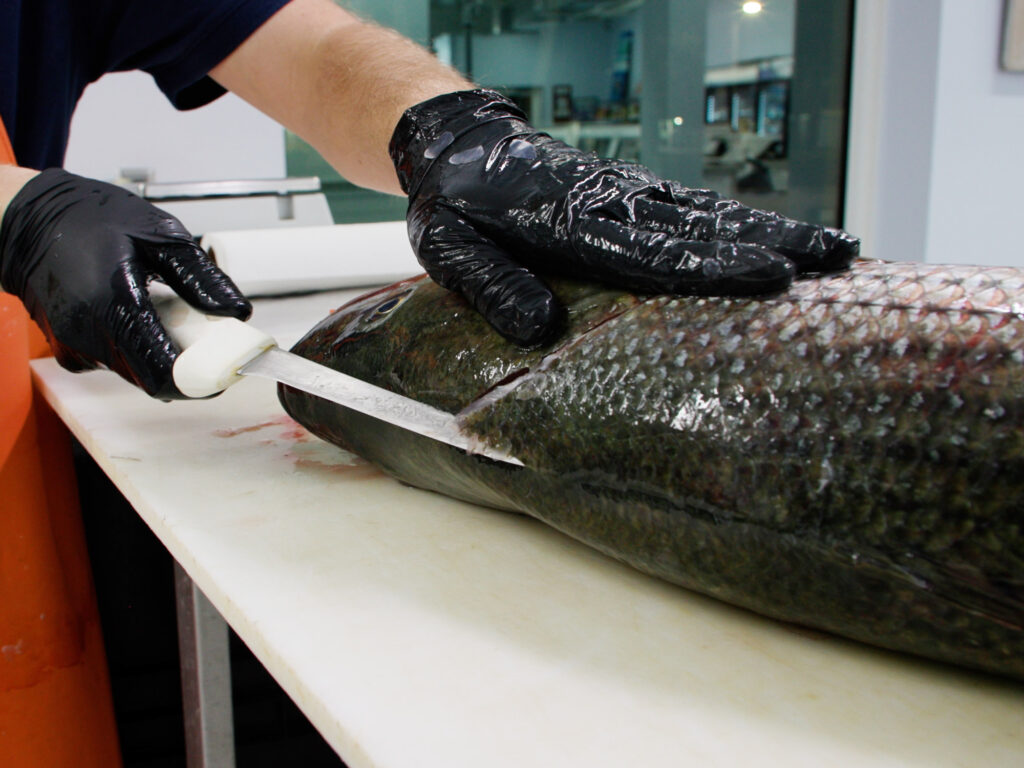
Next, use the tip of your knife, blade facing outward, to make a precise incision along the fish’s back, just above the dorsal fin. Keep your knife angled for a pushing motion rather than a sawing one. This technique preserves the integrity of the fillet (check out the video below for a visual guide).
Step 3: Every Ounce of Striper Meat
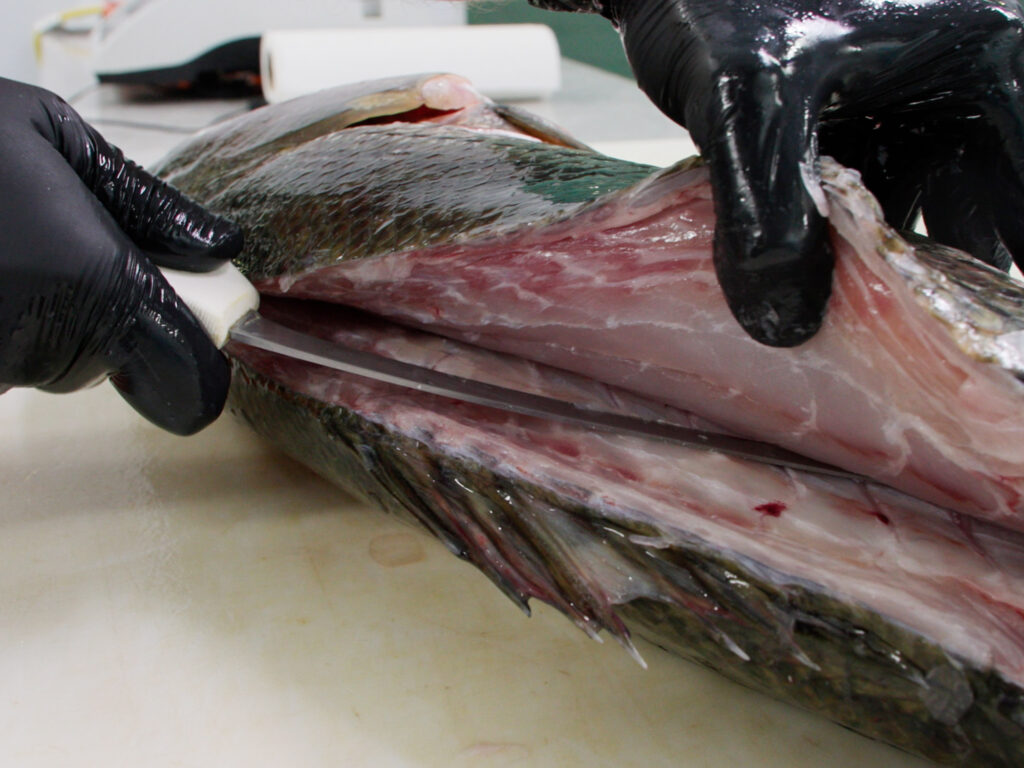
Once you reach the spine, rest your knife gently on the backbone and pull toward the head, allowing the skeleton to guide your blade. This method ensures you capture every ounce of that prized striper meat. After a few long, controlled strokes, you should reach the center of the spine.
Step 4: Cut Out a Rib-Free Striped bass Fillet
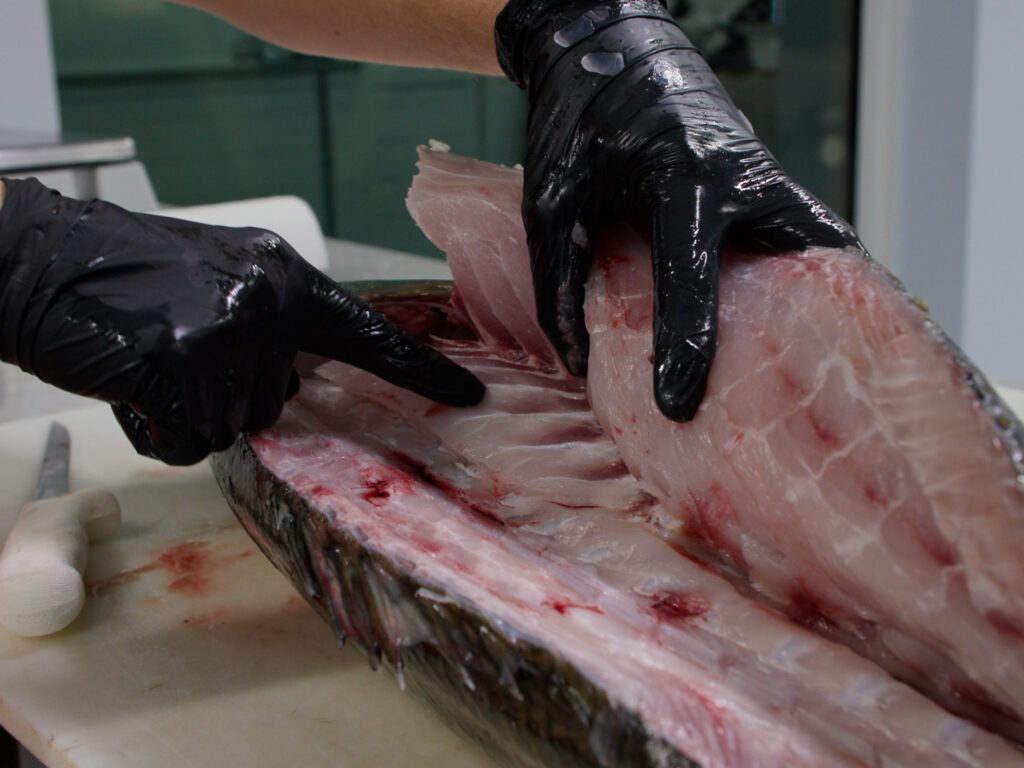
Now, place just the knife tip at the base of the ribs, angle the blade slightly upward, and push forward to separate the pin bones from the rib cage. This step will free the top of the high loin. Lift it carefully to create a better angle for gliding the knife over the ribs, allowing you to remove a clean, rib-free fillet.
Step 5: Don’t Forget the Fish Cheeks
lip the fish and repeat the process on the other side—but don’t forget the cheeks! These small, delicate pieces have a fluffy texture with a sweet mild flavor and are a true delicacy.
Honor the Striped Bass
Conservation isn’t just about limiting catches; it’s about fully utilizing what you take. Striped bass heads and bones make excellent stock for soups and stews. The collars, rich in fat and flavor, are perfect for grilling. Even the skin can be crisped for a savory snack. Embracing a nose-to-tail philosophy ensures your catch is honored and not wasted.
What Makes a Good Fillet Knife?
With thousands of hours at the cutting board, slicing up everything from 300-pound swordfish to 1-pound snapper, Reed Brand, aka Reed the Fishmonger, knows a thing or two about fillet knives. He uses a Dexter 7-inch flexible fillet knife for almost every cut he makes at Captain Clay & Sons Seafood Market in Delray Beach, Florida.
Brand opts for up a serrated blade to saw bone when he’s cutting steaks, but has grown accustomed to a flexible, 7-inch, straight blade with a grippy handle for just about every other application.
Stainless-Steel or Carbon Steel?
A blade with high carbon content is softer, so it’s easier to sharpen to a fine edge. However, carbon-steel rusts more easily than stainless-steel. The choice is a personal one based on how you plan to use and care for your knife. Many brands coat their blades with substances like titanium or Teflon for protection and friction reduction.
5 High-Quality Fillet Knives
There are a lot of good fillet knives on the market. Here are a few quality knives to begin the search.
• The AFTCO 8-inch Flexible Fillet Knife has a full-tang Böker German stainless-steel blade with AFTCO’s gold tin finish. It was designed to retain sharpness and resist corrosion, and the textured polypropylene handle is slip-free.
• Dexter’s 7-inch Flexible Fillet Knife is the workhorse in a line of fish knives renowned among professionals for performance and value. High-carbon steel is easy to sharpen, and the Sani-Safe handle is grippy, even when wet.
• The Bubba 7-inch Tapered Flex Folding Knife is a folding fillet knife with a Ti-Nitride coated high-carbon stainless blade that is sharp and corrosion resistant. The non-slip handle features a trigger grip for security and control.
• Benchmade’s 7-inch Fishcrafter features the company’s CPM-MagnaCut steel that was created for corrosion resistance and edge retention with a medium flex. A Santoprene handle retains its grip even when it’s wet and slimy.
• The Toadfish 8.5-inch Stowaway Fillet Knife is a folding knife with a built-in carabiner to hang from a belt-loop. The blade is Japanese stainless-steel with a black finish and a serrated top edge. The non-slip handle is designed for a comfortable and secure grip.

